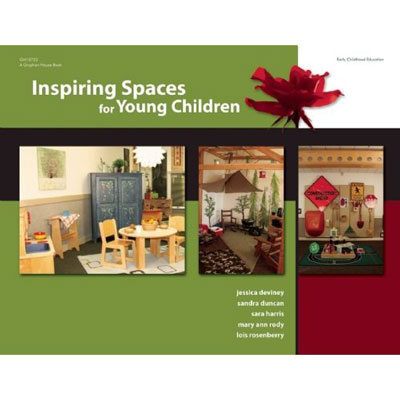ExchangeEveryDay Past Issues
 << Previous Issue
| View Past Issues | | Next Issue >>
<< Previous Issue
| View Past Issues | | Next Issue >> -Emily Maroutian
A new study, reported in the New York Times, looked at whether highly decorated Kindergarten classrooms encourage, or actually distract from, learning. The study, one of the first to examine how the look of these walls affects young students, found that when kindergartners were taught in a highly decorated classroom, they were more distracted, their gazes more likely to wander off task, and their test scores lower than when they were taught in a room that was comparatively spartan.
The researchers, from Carnegie Mellon University, did not conclude that kindergartners, who spend most of the day in one room, should be taught in an austere environment. But they urged educators to establish standards. In the early years of school, children must learn to direct their attention and concentrate on a task. As they grow older, their focus improves. Sixth graders, for example, can tune out extraneous stimuli far more readily than preschoolers, the study’s authors noted.
"So many things affect academic outcomes that are not under our control," said Anna V. Fisher, an associate professor of psychology at Carnegie Mellon and the lead author of the study. "But the classroom's visual environment is under the direct control of the teachers. They're trying their best in the absence of empirically validated guidelines."
|
Buy Inspiring Spaces and get a FREE downloadable PDF Exchange Essential of your choice ($10 value). Take these simple steps at check out:
|
|
Offer valid through February 11, 2017 at 11:59 pm Pacific Time. |






Comments (4)
Displaying All 4 CommentsCSBC
Denver, CO, United States
What, we are teaching to the test in kindergarten? This is one of the problems with research: what is being studied? And, how are children going to learn to selectively focus on relevant stimuli if the teachers do it for them? Finally, what about children who spend 10 hours a day in the same boring environment? Brain development at this age requires stimulation, novelty, change, - and yes, the need to actively explore the environment and make decisions about what is relevant and what is not. The only good thing here is to make sure that children are highly involved in creating, changing, and manipulating their own environment.
Westborough, MA, United States
It saddens me to think that some people believe that test scores are an appropriate standard to determine what a child is learning. Those highly decorated, stimulating classrooms might be inspiring to the next Picasso, Mozart or Einstein. Let's not throw creativity out the window for high test scores!
Preschool Plan It
United States
As stated in the article, "their study looked only at one small group of kindergartners, and that its results may not apply to older children. Moreover, the students sat in the rooms for one lesson at a time, rather than a full school day." Well, of COURSE they were distracted by the decor, it is not their regular environment.
Young children learn about the world around them by using their senses. And though I agree we can "overstimulate" children (for example, by having the preschool walls at Circle Time so plastered with letters, shapes, numbers, colors, etc. that the children tune out so to speak), I think there is great value in well chosen wall items and displays).
The statement suggesting that teachers (of all grades) have "empirically validated guidelines" just screams no to me...that suggestion is a slippery slope. It is one that translates to governmental control and the teachers being "tested and graded" on whether or not their walls "pass inspection".
I think we have much more important, helpful-to-the-children areas money and time should be spent on that wall decor.
Ireland
I've yet to read the study - my initial response is that kindergartners need to be mainly exploring in a play-based environment [as supported by many academic studies], not focusing on set tasks. Measuring solely on academic achievement in the current circumstances is too narrow, children at this stage are developing other skills and in many ways...their social skills for example, their creative capactity.......
Post a Comment